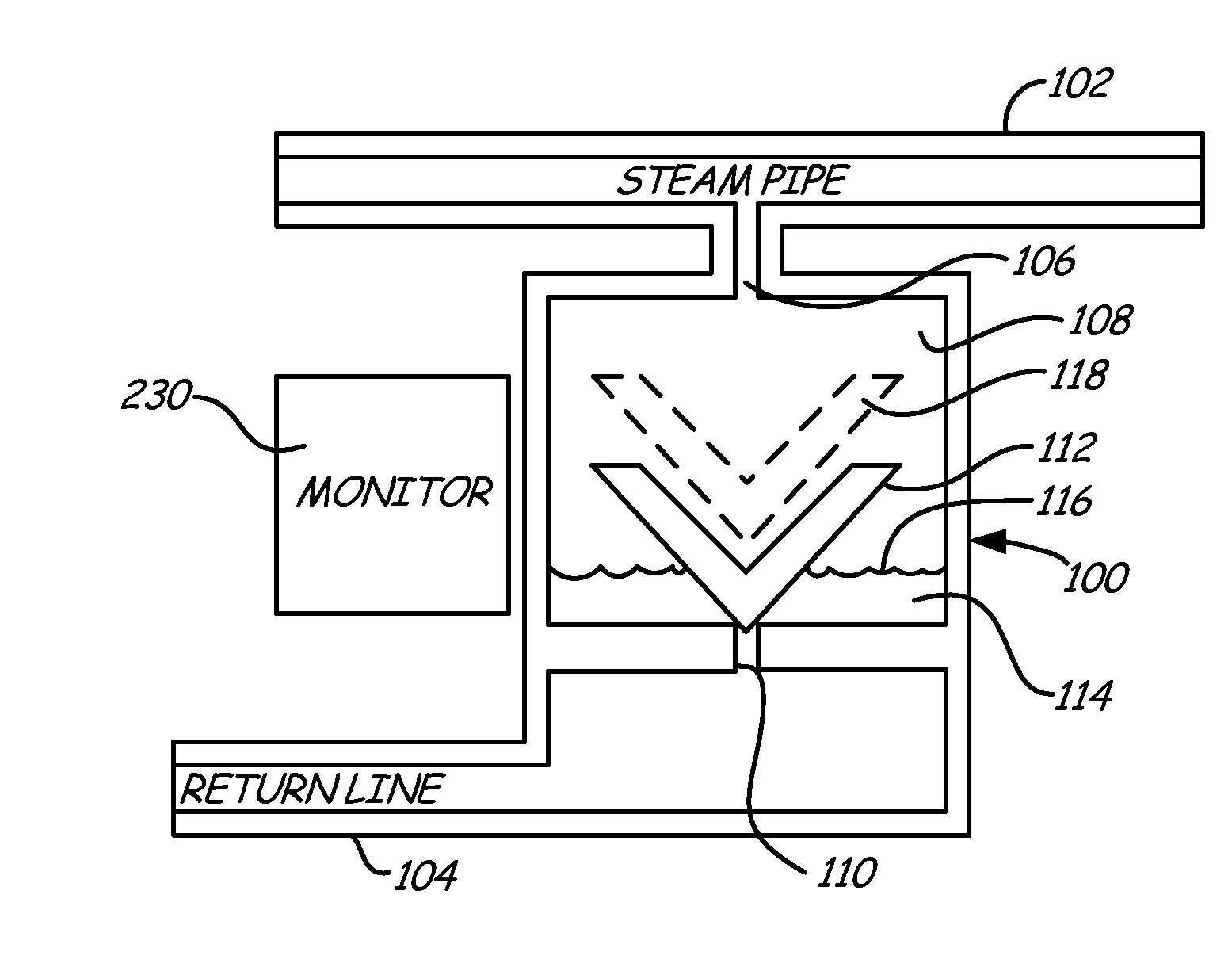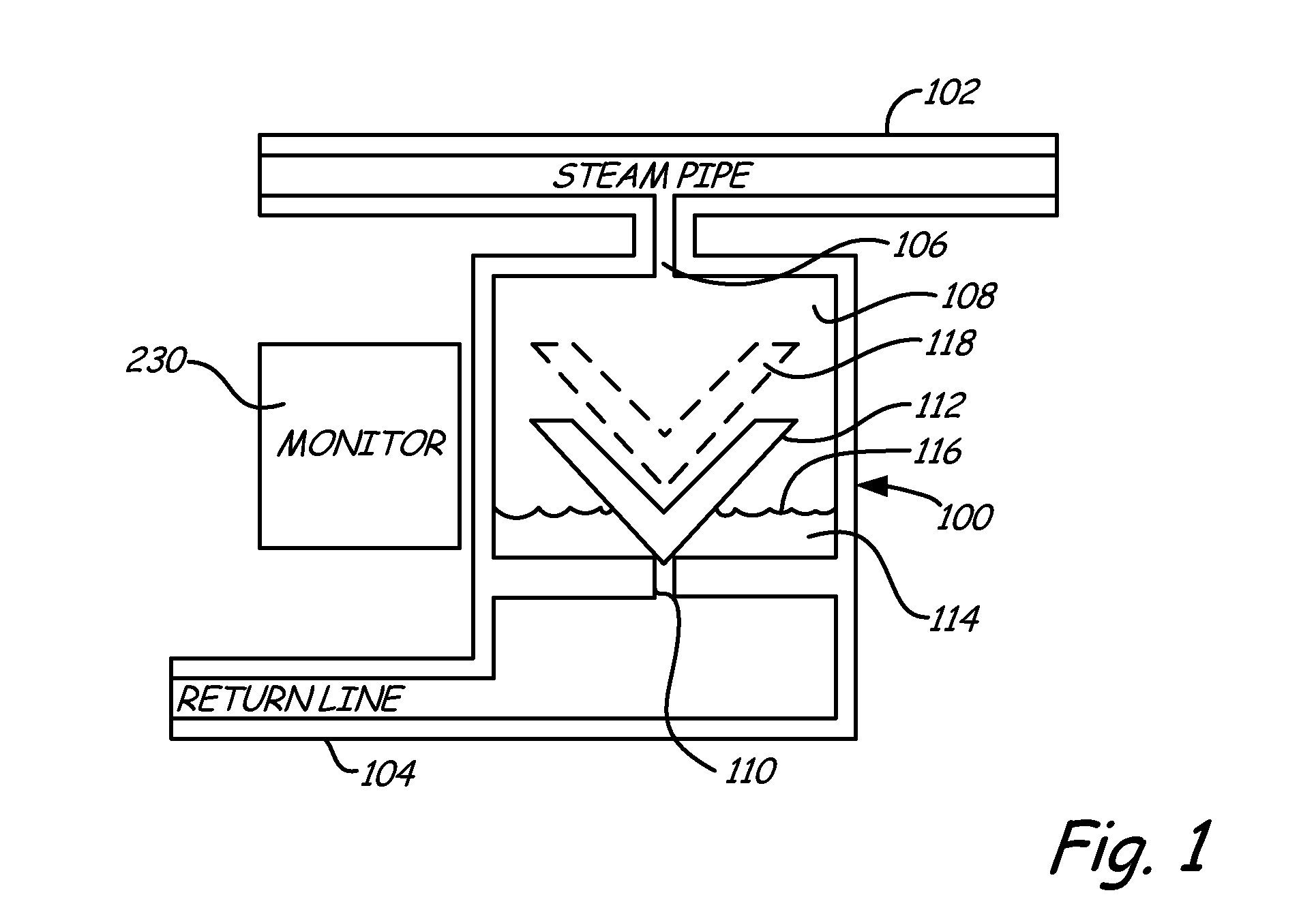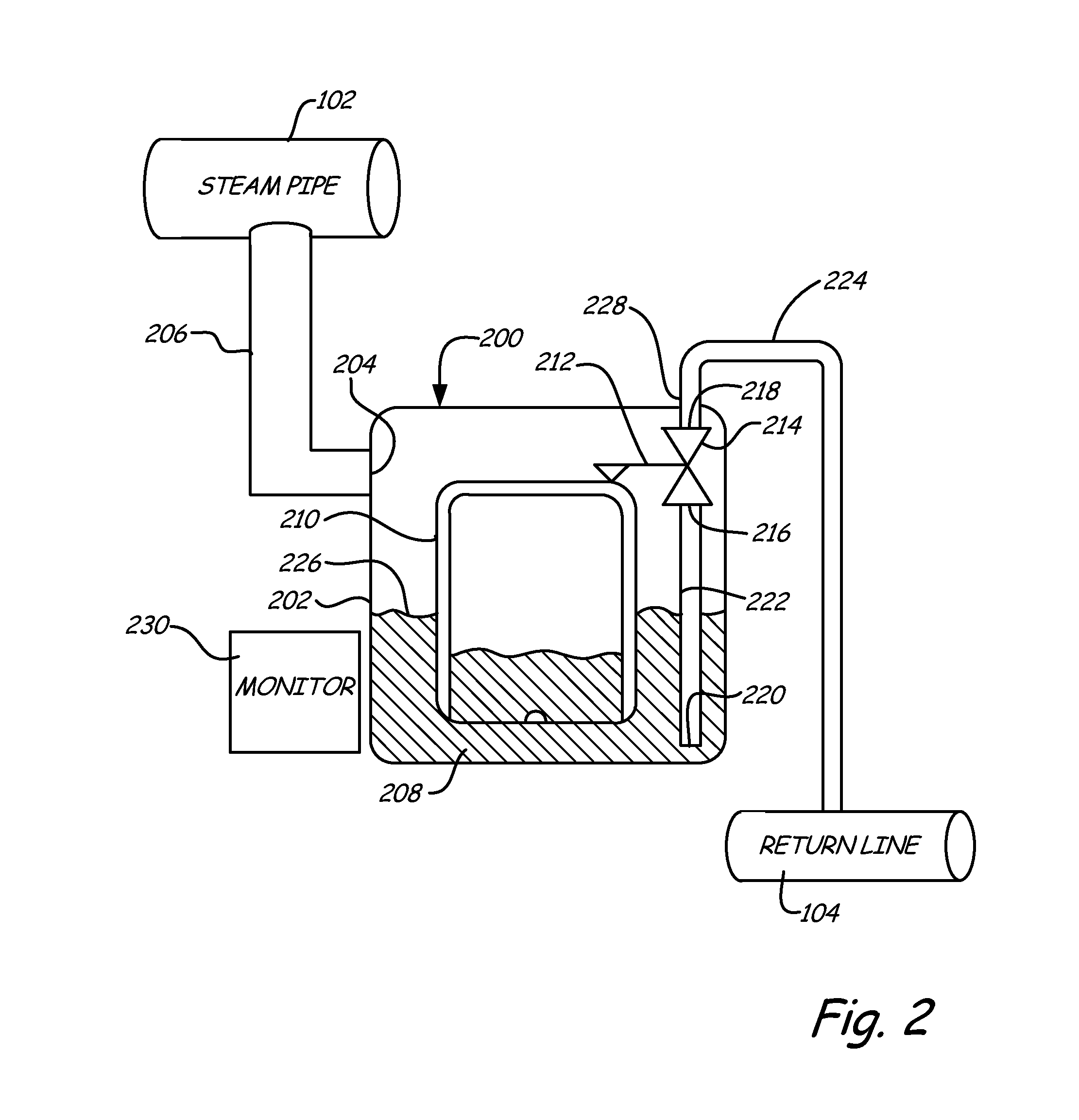Steam trap monitor with diagnostics
a technology of steam trap and monitor, which is applied in the direction of water supply installation, transportation and packaging, service pipe system, etc., can solve the problems of steam trap completely mechanical, leakage or stick, and steam traps that experience very common problems
- Summary
- Abstract
- Description
- Claims
- Application Information
AI Technical Summary
Benefits of technology
Problems solved by technology
Method used
Image
Examples
Embodiment Construction
[0012]In the present invention, a steam trap monitor is provided which includes a process variable sensor for use in performing diagnostics on a steam trap. The process variable sensor senses a process variable related to operation of the steam trap. For example, the sensed process variable can be related to the opening and / or closing of the steam trap. Diagnostic circuitry in the steam trap monitor calculates a current parameter of the process variable sensed by the process variable sensor. This is compared with a baseline parameter stored in a memory and used to responsively provide diagnostics.
[0013]Some prior art steam trap monitors simply provide an indication that the trap has completely failed, for example, it is stuck in an open or closed condition. However, it would also be desirable to identify a trap that is in the process of failing prior to its ultimate failure. This allows the steam trap to be replaced at a desired time without unnecessarily shutting down the industria...
PUM
 Login to View More
Login to View More Abstract
Description
Claims
Application Information
 Login to View More
Login to View More - R&D
- Intellectual Property
- Life Sciences
- Materials
- Tech Scout
- Unparalleled Data Quality
- Higher Quality Content
- 60% Fewer Hallucinations
Browse by: Latest US Patents, China's latest patents, Technical Efficacy Thesaurus, Application Domain, Technology Topic, Popular Technical Reports.
© 2025 PatSnap. All rights reserved.Legal|Privacy policy|Modern Slavery Act Transparency Statement|Sitemap|About US| Contact US: help@patsnap.com



